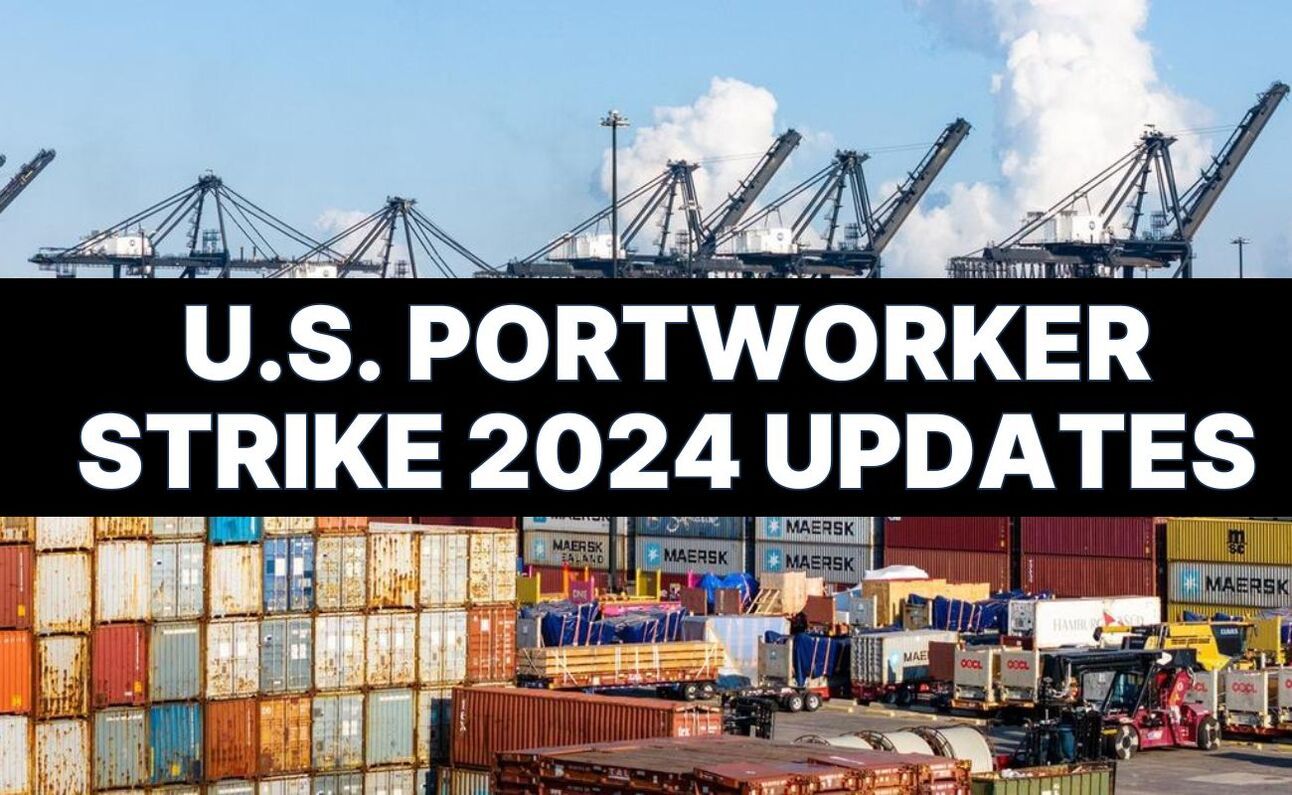- Let's Talk Logistics
- Posts
- East Coast Port Strike Averted—What It Means for Your Supply Chain
East Coast Port Strike Averted—What It Means for Your Supply Chain
A major disruption to East and Gulf Coast ports was narrowly avoided this week.

The International Longshoremen’s Association (ILA) and the United States Maritime Alliance (USMX) reached a tentative six-year contract agreement on January 8th, just days before their original deadline approached.
With automation at the center of the dispute, the deal strikes a balance between modernization and job security, averting a strike that could have thrown supply chains into chaos.
With that, all eyes are on the East Coast and Gulf Coast ports.
The Strike That Almost Happened
For months, negotiations between the ILA (representing about 45,000 dockworkers from Maine to Texas) and the USMX (representing port operators and shipping companies) have teetered on the brink of collapse.
The union’s existing contract extension was set to expire on January 15th, and the impending strike threatened to shut down ports along the East Coast and Gulf Coast.
With an estimated 40% of U.S. containerized cargo flowing through these ports, a prolonged shutdown would have had a domino effect across multiple industries—from retail to automotive, agriculture, and more.
We talked about these negotiations at the end of September—check out our article HERE to read the full back story.
Why was Automation the Deal-Breaker?
The core debate in these negotiations? Port automation.
Terminal operators argue that modernizing with semi-automated cranes and improved container-handling equipment is vital for global competitiveness.
On the other hand, longshoremen fear that each new machine displaces human labor.
Union Perspective: Automation = fewer jobs, less bargaining power, a potential downward pressure on wages, and a loss of skilled dockworker roles.
Employer Perspective: Keeping up with global logistics standards demands advanced technologies that can handle higher throughput, reduce dwell times, and lower operational costs.
Inside the Tentative Agreement
On January 8—one week before the deadline—the ILA and USMX reached a six-year tentative master contract. Key points include:
Limited Automation: Ports gain the flexibility to introduce new technologies—like semi-automated cranes.
Guaranteed New Hires: In a concession to the union, every piece of new machinery introduced must come with new job opportunities for dockworkers.
No Full Automation: Full-scale automation (i.e., fully autonomous terminals) will remain off-limits for the life of this contract.
Additional Wage Increases: A previously agreed-upon wage hike (in October’s short-lived work stoppage) will carry through, taking top hourly pay from $39 to $63 over six years.
Although the exact details—like container royalties, benefit structures, and exact hiring quotas—remain under wraps until the contract is formally ratified, this settlement strikes a middle ground between modernization and job protection.
Who’s Breathing a Sigh of Relief
Agriculture: Exporters of perishable goods like cotton, meats, and fruits welcomed the news. Extended port closures could have meant domestic oversupply and harsh price drops for farmers.
Automotive Industry: Car manufacturers, especially those reliant on East Coast ports for key auto parts, were bracing for potential assembly-line stoppages.
Consumers: Without the threat of a near-term strike, you’re less likely to see sudden price hikes for everyday goods—from groceries to electronics.
Retailers: With major retail seasons on the horizon, businesses feared inventory shortages and logistical nightmares that inevitably lead to higher prices on the shelves.
What Comes Next
Ratification: The ILA’s rank and file must still approve the contract terms. This process might stretch into the summer, so we’re not completely out of the woods.
Automation Implementation: Terminal operators will likely begin planning how—and when—to introduce new tech. This means potential new training for longshoremen and reconfiguring terminal layouts.
Economic Watch: Supply chain analysts are watching closely to see if renewed labor strength translates to other logistics sectors. If so, we could see more unions pushing for higher pay and stricter job security guarantees.
While the immediate crisis is over, the tension between technology and labor is far from settled.
Expect an ongoing push-pull between the drive for efficiency and the need to preserve good-paying union jobs.
For shippers and importers, it’s a signal to build stronger contingency plans around labor disruptions and invest in more visibility across supply networks.
The East Coast port negotiations are part of a larger story—a wave of union activism that’s reshaping logistics.
From dockworkers to warehouse employees, labor organizations are flexing their renewed power in critical choke points of the supply chain. For now, the pact between the ILA and USMX offers a six-year window of stability.
But in a rapidly evolving supply chain landscape, “stability” can be a moving target.
We’ll keep you updated in upcoming newsletters as the ratification process unfolds and as we learn more about how the new technology requirements will roll out.
Until next time—stay vigilant, stay informed, and remember: the only constant in logistics is change.